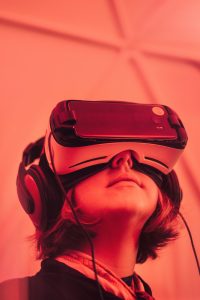
Photo by Samuel Zeller on Unsplash
In Holland and Holland’s Article, they reference a quote from Willard stating, “To have mobile learning work well, power has to shift from instructors and managers to the learners themselves” (Pg. 19). As a technology teacher, my classroom is structured towards personal discovery by tapping into their passions for software and/or a possible future vocation. It is essential, in my opinion, that the students are engaged in their work, and that is enhanced by choice. My classroom is based on the ideas of: problem-solving, work ethic, adaptability, and working well with others. I have spoken to people in the technology fields and they have all said to me that the skills I mentioned earlier are more important to their success than learning a certain programming language or software. They further explained that each of their companies have software they design and use. This means that a new hire will have to use the software and they are willing to teach them that.
As a teacher, having that interaction with the industry people, really shaped what and how I taught computer classes at my school. I stopped the “stand and deliver” mode of teaching as I realized that I was teaching to the 25% of the class that was actually interested in that software, or area, of computers in general. It is my mission to acquire more software options that they can delve into, if it meets their interest and, for some, their future goals. This means I have to release full control over my students’ learning and become a facilitator. I do this by helping to guide them towards their own goals, through design phases and creation, while teaching time management. With all this said, the students are challenged with the same issues we as educators are challenged with, the short-lived relevance of any particular software.
There are always the standards in software, Adobe and Microsoft, being a few. However, I get frustrated, and so do my learners, with the ever changing new-big-thing in technology. It makes designing learning for the future problematic when the field always changes. Instead of allowing our frustrations to get the best of us, we are working, as a class community, to not look at the software itself but in the growing trends of technology and areas of growth. 3-dimensional printing and graphic design are growing fast in my class, as is architecture and interior design. We use a variety of software to meet the learning outcomes, as they advance. Designing on Google Sketch-Up leads some students to move on to CAD programs through Autodesk. All of these enhancements could not be possible if the students are not engaged and passionate.
Holland and Holland state, “the current workplace knowledge-based economies are requiring more high-level creative thinking skills with workers adept in problem-solving…” (Pg. 18). The technology industry is exploding, and so is the need for the employees ability to persevere and problem solve. Most jobs will require some form of computer literacy and in my opinion, computer literacy is more than the ability to type and navigate search-engines and folders (though that is very important). Computer literacy involves understanding why something may not be working, and the ability to rectify this situation by problem-solving. Software and Hardware glitches happen, what do you do now? Software updates can lead to a totally different user-interface (see Blender 2.7 to 2.8) and you will have to learn and adapt. Even Adobe can throw some curve-balls when they update to a new version. We are in a world that is as technologically dynamic as ever before, and we would be remiss to think this is going to slow down anytime soon.
Andrew Vogelsang
